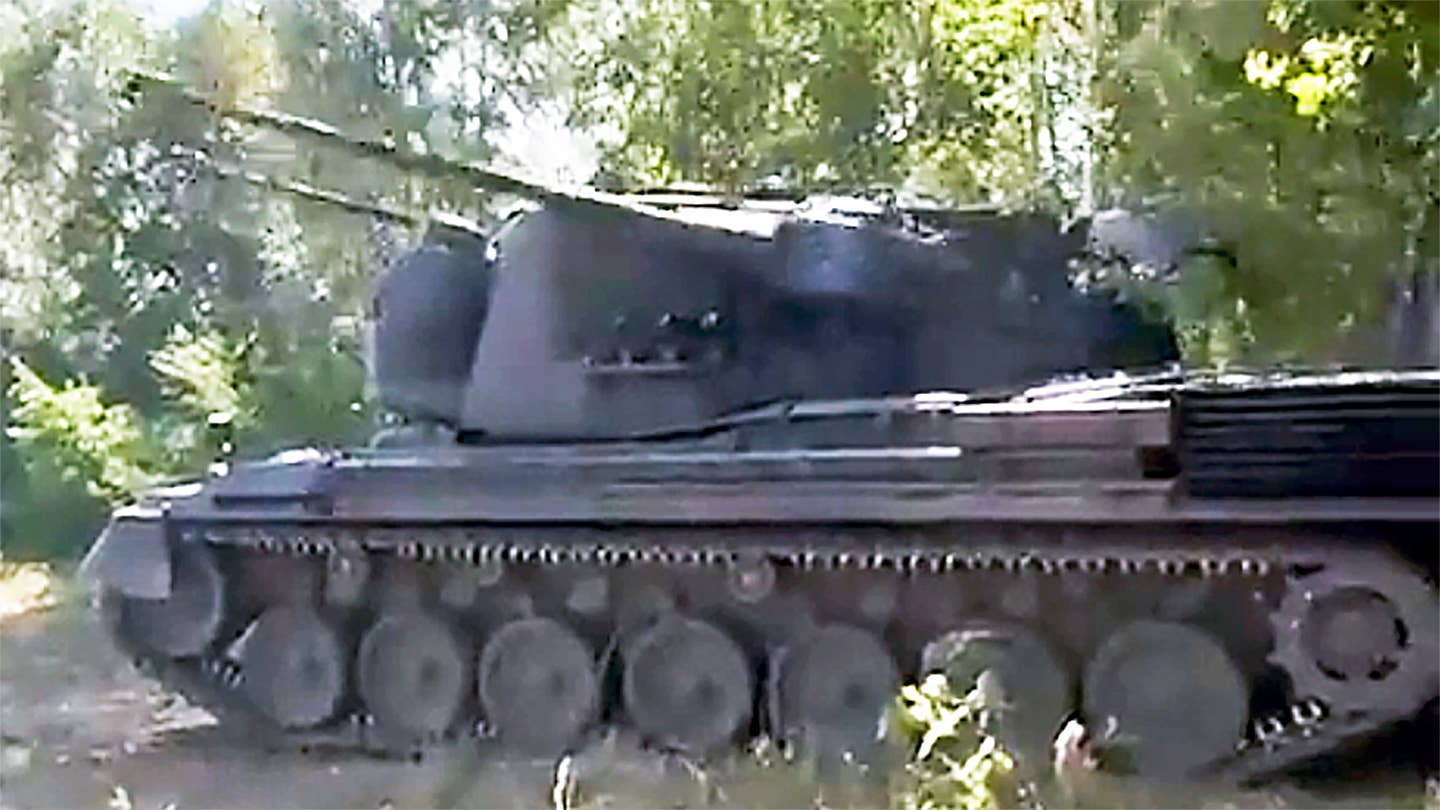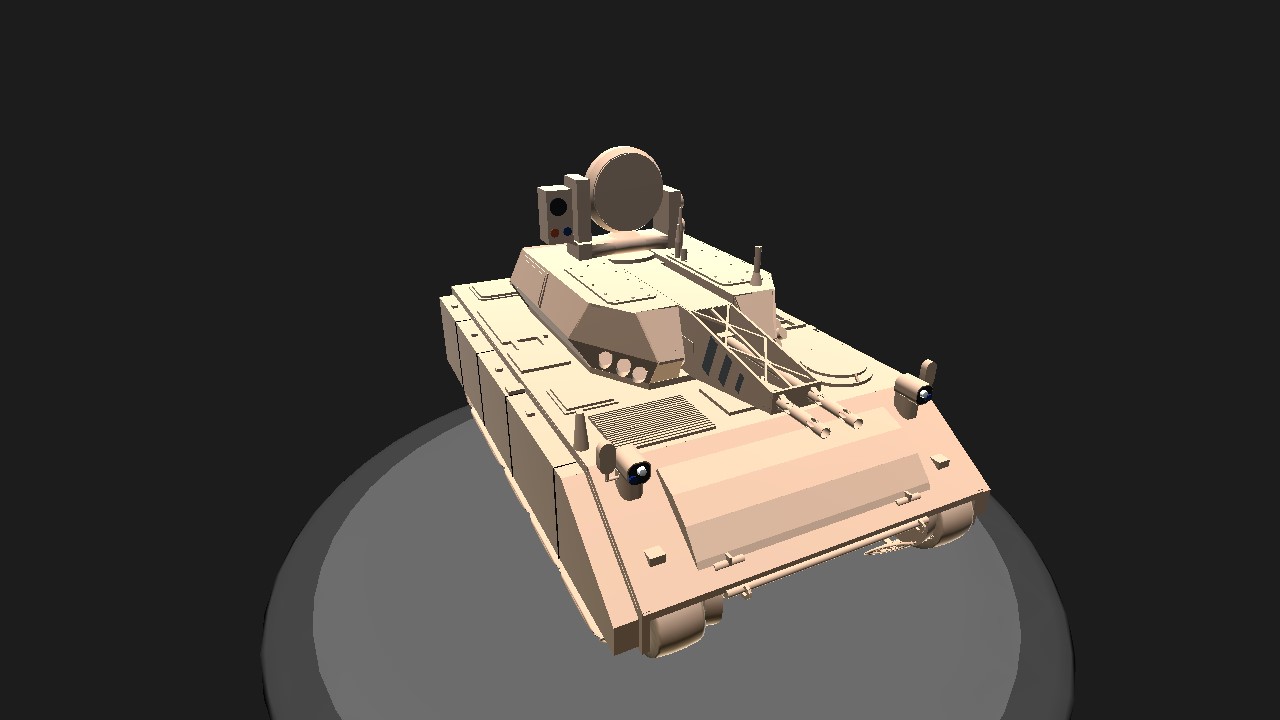Anti-aircraft Tanks - German Chancellor Olaf Scholz poses in front of a German Flakpanzer Gepard self-propelled anti-aircraft gun during a visit to a Gepard anti-aircraft tank training program for Ukrainian soldiers in Putlos, near Oldenburg, Germany, August 25, 2022. Axel Heimken/Across the Pond
BERLIN, Dec 2 () – Germany is preparing to deliver seven Chephard tanks to Ukraine, adding to 30 anti-aircraft tanks used in the fight against the Russian military, according to a German government website.
Anti-aircraft Tanks

According to Spiegel magazine, which first reported the number of additional tanks, seven Gepards, originally destined for the scrap heap, will arrive in Ukraine in the spring of 2023 and are currently being repaired by Munich arms manufacturer Krauss-Maffei Wegmann ( KMW )..
Tank Anti Aircraft Gun Modern Weapon Foto De Stock 723033886
The government did not say when it plans to deliver the tanks, which come from manufacturers' stocks and in some cases are subject to repair measures, or are still in production.
The German government intends to send additional tanks as well as additional ammunition for the Cheetahs, writes Spiegel.
Ammunition for the Cheetah proved problematic, as Switzerland, which had stockpiled the ammunition, refused to supply it, citing its neutral status.
The government is in talks with various manufacturers to try to buy more ammunition and Switzerland may find itself in a situation where it no longer needs them, a defense ministry spokesman said at a press conference on Friday.
Germany Will Send Heavy Anti Aircraft Weapons To Ukraine
Since early October, Ukraine has asked its Western partners to provide air defense systems and transformers to counter Russian attacks on power grids and heating infrastructure.
NATO Secretary General Jens Stoltenberg told a security conference in Berlin on Thursday that the allies agreed on the need for immediate assistance to Ukraine, including air defense systems, but that it was important that the systems delivered worked. , including ammunition and sufficient spare parts. said and maintenance. This article needs additional citations for verification. Please help improve this article by adding citations to reliable sources. Unsourced material may be challenged and removed. Find sources: "Self-Propelled Anti-Aircraft Gun" – News · Newspapers · Books · Scholars · JSTOR (November 2007) (Learn how and what to remove this template message)
An anti-aircraft vehicle, also known as a self-propelled anti-aircraft weapon (SPAAG) or self-propelled air defense system (SPAD), is a mobile vehicle with special anti-aircraft capabilities.

Specific weapon systems used include machine guns, autocannons, larger guns or rockets, and some mount both guns and long-range missiles (such as the Pantsir-S1). The platforms used include trucks and heavier combat vehicles such as armored vehicles and tanks, which provide protection from aircraft, artillery and gunfire for frontline deployments.
Nervous Germany Agrees To Send Anti Aircraft Guns
Anti-aircraft guns are usually mounted in a high-velocity turret to track fast-moving aircraft. They are often mounted in twos or fours, allowing a high rate of fire. Additionally, most anti-aircraft weapons can have a greater effect in the direct fire role against surface targets. Today, missiles (mounted on similar turrets) have largely replaced anti-aircraft weapons, but they may return as an inexpensive way to combat unmanned aerial systems (drones).
Anti-aircraft guns have long been mounted on trucks and were very common during the First World War. WW2 German Anti-Aircraft Gun '88, a German 77mm anti-aircraft gun mounted on a truck. Great effect against British tanks.
British QF 3 inch 20 cwt mounted on trucks for use on the Western Front. The British also had the first dedicated anti-aircraft gun, the QF 1-pounder pom-pom. Mounted on an armored truck called the Pierce-Arrow, it was produced in limited numbers and entered service only in 1915.
Between the two world wars, the United Kingdom developed the Birch, a general purpose artillery piece capable of maintaining formation with its tanks in the field on an armored wheeled chassis. The gun can be raised for anti-aircraft use.
Utaas Tank And Anti Aircraft System
Vickers Armstrong also developed the SPAAG, which mounted the Vickers QF-1 "Pom-Pom" 40mm gun, based on the chassis of the 6-ton Vickers Mk.E light tank/artillery tractor Dragon, Medium, Mark IV. About 26 were sold to Siam and saw action during the Franco-Thai War (1940-1941) as infantry support guns and AA guns and 30 Vickers Mk.E Type B 6-ton tanks. This was probably the first observed serially produced SPAAG. The British later developed a version of the Mk.VI light tank armed with four machine guns, known as the AA Light Tank Mk.I. A twin 15mm version based on the Mk.V light tank was also built.
Among the pioneers of pre-war AA self-propelled guns were the Germans. During the war, they fielded the Sd.Kfz. 10/4 and 6/2, cargo half-rails mounted with a 20mm or 37mm AA gun (respectively). Later in the war, similar German half-tracks mounted four 20mm guns.
Larger guns followed, but this installation required a truck mount to free the stabilizer legs the guns needed. An exception to this rule was the Italian Cannone da 90/53, which was very effective when mounted on trucks, a device known as the "autocannoni da 90/53". The 90/53 was a particularly formidable weapon in the anti-tank role, but only a few hundred were produced by the time the armistice was signed in 1943.

Other countries tend to work on truck chassis. Beginning in 1941, the British developed the "portee" method of mounting an anti-tank gun (originally a 2-pounder) on a truck. This was to prevent damage to the gun by hauling it long distances over rough, rocky deserts, and was intended to be a method of keeping the gun unloaded for firing only. However, due to the mobility of this method, crews had to fire from the vehicles, resulting in casualties.
Swiss Veto German Request To Re Export Tank Ammunition To Ukraine
This undoubtedly inspired their Morris C9/B (formally 'Carrier, SP, 4x4, 40mm AA'), a Bofors 40mm AA gun mounted on a chassis derived from the Morris 'Quad' Field Artillery Tractor truck.
Similar types based on 3-ton trucks were produced in Britain, Canada and Australia and together constituted the largest number of self-propelled AA guns in British service.
The US Army was the first to sail to Great Britain and France with truck-mounted Bofors 40mm AA guns and truck-mounted units equipped with mechanized turrets. There are four 50-inch (12.7 mm) machine guns in the turret, which are suitable for placing directed units on large infantry and field artillery units at a single point where low-altitude aircraft were expected to appear.
Interest in mobile AA has evolved into heavier vehicles with the mass and stability needed to easily field weapons of all sizes. Perhaps the desire to armor anti-aircraft vehicles for their protection, especially in German service, contributed to this.
Germany To Send 50 Gepard Anti Aircraft Tanks To Ukraine
The SPAAG armored concept was created by Hungary during World War II by producing the 40M Nimrod under license from the Luftvärnskanonvagn L-62 Anti II purchased from Sweden. Germany followed later with the Flakpanzer series. German SPAAGs of World War II included the Möbelwag, Wirbelwind, Ostwind and Kugelblitz. Other forces followed suit, notably the American M16, created by mounting four M2HB Browning machine guns on the M3 Half-track.
During the war, the British developed their SPAAGs, which mounted multiple machine guns and light cannons on various tank and armored car chassis, and by 1943, the Crusader AA tanks, which mounted either a 40 mm Bofors gun or two or three Oerlikon 20mm guns. came out Although it was used during the Normandy landings, by then German aircraft had been held by Allied air forces and were largely unnecessary.
The Flakpanzer Gepard has integrated radars, fire control and two 35 mm guns in a new turret mounted on the Leopard chassis.

The introduction of jet engines and doubling the speed of the trailing aircraft significantly reduced the SPAAG's effectiveness against attacking aircraft.
The Anti Aircraft Tank Germany Will Send To Ukraine This Month
A typical SPAAG round may have a muzzle velocity of 1,000 meters per second (3,300 ft/s) and take two to three seconds to reach a target at maximum range. An airplane flying at 1,000 kilometers per hour (620 mph) is traveling at about 280 meters per second (920 ft/s). This meant that the aircraft would travel hundreds of meters during the flight of the shells, which made the targeting problem so difficult that it was impossible to aim close passes with manual launchers. This speed also allowed the aircraft to fly quickly out of gun range; If the aircraft passes directly over the SPAAG, it will be in its firing range in less than 30 seconds.
Development of the SPAAG continued in the early 1950s with increasingly larger guns, which improved range and allowed longer ranges with a smaller angle of attack and easier targeting. Examples include the US M42 Duster 40mm and the Soviet ZSU-57-2 57mm. However, both were obsolete before entering service and found employment only in ground support roles. The M42 was introduced in the Vietnam War to counter an anticipated North Vietnamese air attack, but was a failure.
Anti-aircraft, aircraft auxiliary fuel tanks, aircraft bladder fuel tanks, aircraft external fuel tanks, anti aircraft, model aircraft fuel tanks, aircraft tanks, ultralight aircraft fuel tanks, aircraft fuel tanks, anti tanks, aircraft anti collision lights, anti aircraft game